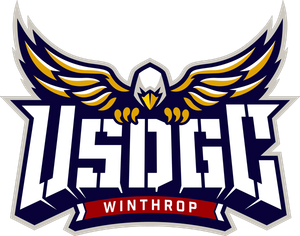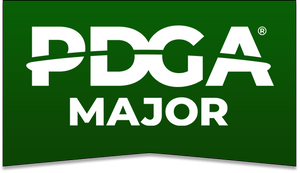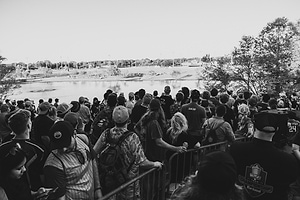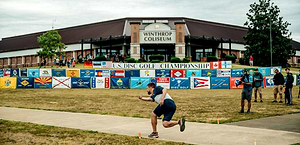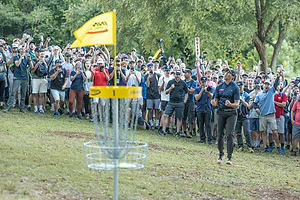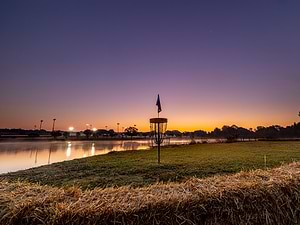What do you do when you’re asked to flag the Winthrop Gold Course fairways and take the lead for other course changes? Well, for Andrew Duvall, you eagerly accept.
“I wasn’t shooing away that opportunity if you know what I mean,” said Duvall, 24, when his father, USDGC Chairman and Winthrop Gold Designer Harold Duvall asked him several months ago if he was interested in the assignment.
A sign of the Championship
Flagging the Winthrop Gold fairways is always a sign that the USDGC is upon us. It’s an important job that’s essential to erecting the famous Winthrop OB rope that the USDGC originated and is well known for.
For most of the holes that require OB, Andrew was tasked (several weeks before the event) with creating the yellow and red roped fairways. Pinning small survey flags (many used year after year) to the ground every few feet, Andrew outlined where the OB rope would go. It’s no easy task because there’s no instruction manual and the flags are never in the same exact place each year. According to Harold Duvall, the design of the flags tries to assess how the course performed last year and to create the best challenge for this year’s field.
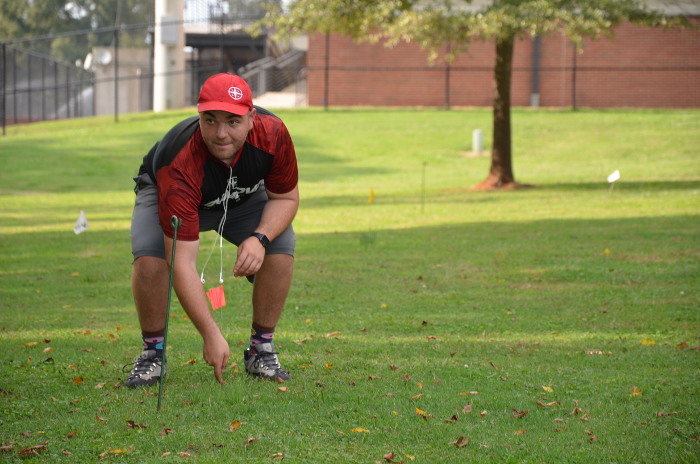
After the OB is settled, crews later come in to hammer the stakes near the flags and then thread in the yellow and red OB rope through the stakes.
It’s in his blood
Since Andrew Duvall was little he’s been walking fairways or potential fairways all over the region with his dad, soaking up valuable insight from one of the game’s design masters. As an adult, Andrew has continued building his course knowledge.
He designed a 9-hole family friendly course in Tory Hole Park in Elizabethtown, N.C., and he lent a hand with some Camp Canaan holes in Rock Hill, which is the site of USDGC Doubles. Plus, he assisted with the redesign of three holes at Castle Hayne Park in Wilmington, N.C.
Not his first Winthrop Rodeo
Over the years at Winthrop, he’s helped flag a few holes here and there like Hole 17’s famous island outline.
“Four steps away from the pin location is a notorious measurement because that’s where you put the inside of the hay bale,” said Andrew. He’s also contributed to Hole 18 and its final left corner leading to the green, which makes players really have to dial-it-in to avoid getting snagged in OB. “That is as snug as anyone could want it to be,” said Andrew with a smile.
However, this is the first year, all of the course’s design has been turned over to him.
“This is definitely getting the keys to the kingdom,” said Andrew, whose duties during the USDGC have included spotting, shuttling water across the course, and putting out small fires like subduing hornets nests and digging trenches to alleviate flooded tee pads. This year Andrew will continue some of those, but will add to it course analysis to help with next year’s adjustments.
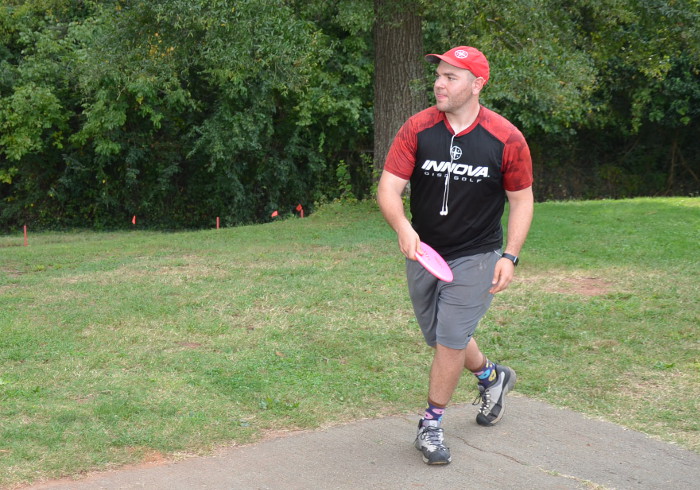
Change is the one Winthrop constant
Never is the Winthrop Gold Course completely the same from the previous year. This year, the holes that were slated for redesign were Hole 9 and Hole 13, and it was Andrew’s job to figure those out too. For more on how he shaped those holes, visit the Caddy Book story.
Any hole, though, is fair game to being adjusted. It’s not uncommon for Andrew and his dad to bounce ideas off each other until they come to a solution. Andrew says the key here is not to settle for good or even great holes when there’s something better to be found.
“We both kind of think that way, always looking for the best thing,” said Andrew.
Ideally, “We want the players to step up to each tee pad and be met with equal levels of anxiety and excitement,” said Andrew. “Maybe except Hole 17, we just want anxiety there,” he added with a chuckle.
Andrew has spent the summer working in the Innova East warehouse, a place he’s practically grown up in. He’s looking to return to college next spring and pursue physical therapy. Course design, though, is a passion of Andrew’s and if that kind of a full-time job ever popped up he’d certainly take it.
To learn more about course design follow these handles on Instagram: @innovadiscs and @the.duvie
